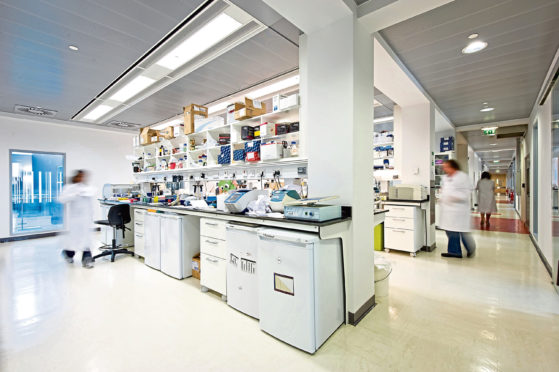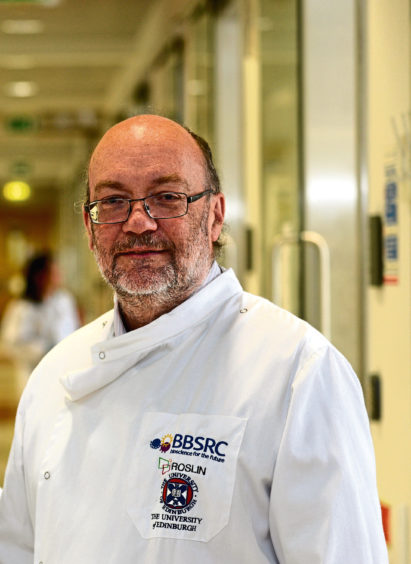Translating cutting-edge science into commercial applications should form a key part of the Covid-19 recovery, claims a leading Scottish scientist.
Professor Bruce Whitelaw, who is interim director of the Edinburgh-based Roslin Instiute, says now is the time to “unleash the potential” of the scientific advances made at the research centre.
He said the Roslin, which rose to fame for developing the world’s first cloned mammal with Dolly the sheep in 1996, was focused on finding ways to prevent and treat important veterinary diseases while building resilience into animals.
Recent advances include the development of pigs resistant to porcine reproductive and respiratory syndrome (PRRS) – a disease which costs the pig industry around £1.75 billion in lost revenue in Europe and the US every year.
Describing him and his colleagues as “genetic engineers”, Prof Whitelaw said although some genetic technologies still had to overcome regulatory processes and gain public acceptance, they had the potential to make a huge difference to global food production.
“The UK Government is making a lot of encouraging noises around being more supportive of this technology, but north of the border we have an entirely different regime,” said Prof Whitelaw.
“It’s not challenging from a research perspective but it’s challenging to think if you develop something successful we may not have the option to use the technology in our own country.”
He called on the Scottish Government to allow the scientific breakthroughs from the institute to be released and developed into commercial propositions for new businesses in Scotland.
“Let us loose,” added Prof Whitelaw.
“We need the doom and gloom that Covid has given us to be lifted and to propel the rise of a whole raft of business activity.”
He said the institute’s innovation centre was working to unleash potential through its Food and Agriculture Science Transformer (Fast) programme.
The centre’s chief executive John Mackenzie said businesses will be developed based on what the market needs with a focus on three areas – regenerative aquaculture, alternative pollinators, and vertical farms.
He said: “We now have a model to translate some of that (Roslin) science.”

